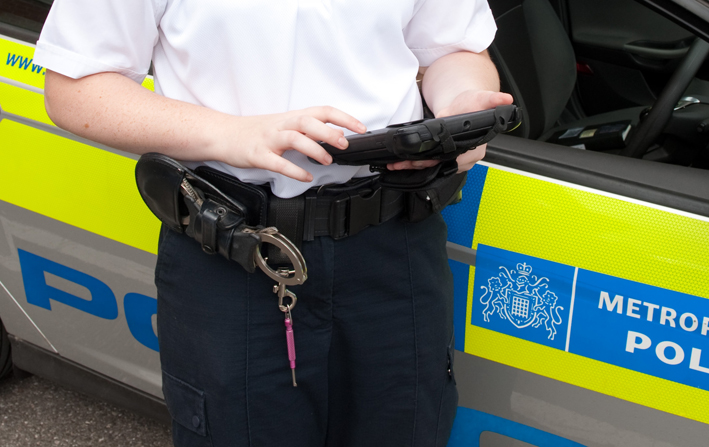Tracking criminal movement
One way to study criminal behaviour and predict a criminals next move is by analysing their movement. Several mathematical models have addressed this in detail, in particular the University of California, Los Angeles (UCLA) burglary hotspot model that spawned the predictive policing software PredPol, currently used by Kent Police and a number of US police departments.

Pattern formation in physical, biological and sociological systems has been studied extensively and although these subject areas are completely diverse, the mathematics that describes underlying patterns can be surprisingly similar, say researchers. Hi-tech mapping tools can be used to study such systems and predict their patterns.
This has considerable benefits in crime modelling. Criminal activity tends to cluster in space and time in urban settings. Analysing spatio-temporal patterns of urban crime using mathematical modelling can reveal hidden patterns in the process of criminal activity and potentially help establish methods for prevention.
A recent paper published in the Society for Industrial and Applied Mathematics (SIAM) Journal on Applied Mathematics, proposes a mathematical model that analyses criminal movement in terms of a Lévy flight, a pattern in which criminals tend to move locally as well as in large leaps to other areas. This closely replicates daily human commute in big cities.
The authors Sorathan Chaturapruek, Jonah Breslau, Daniel Yazdi, Theodore Kolokolnikov and Scott McCalla were looking to determine how various movement strategies of criminals affect the crime rate: With our model, we can infer criminal movement patterns from burglary data and thus gain information on how burglars explore possible targets.
The UCLA model studied the formation of hotspots of criminal activity based on the broken window effect, which proposes that localised regions of high crime activity can occur as a result of previous crimes in an area. For a brief period after a home is burgled it becomes a target for another burglary, as do other houses in the vicinity. This is observed in burglary data; previous crimes make homes more attractive to burglars for a variety of reasons, such as knowledge of how to break in, information about the valuables in a home, ability to navigate the neighbourhood and greater confidence in getting away with the crime.
The UCLA model, which uses a random walk with a bias towards attractive burglary sites to analyse criminal movement, can, however, be restrictive say the authors of the new study, Crime Modelling with Lévy Flights.
The pioneering UCLA hotspot model assumed that criminals move locally, following Brownian (or random) motion, explained Mr Kolokolnikov and Mr McCalla. The model assumed that criminals only had access to information about burglary targets in their immediate vicinity and that they were unlikely to travel large distances to access different neighbourhoods with better targets.
A much more realistic model of human locomotion allows for occasional big jumps. This is typically modelled using Lévy flights.
Random movement
Lévy flights are a modified form of the standard random walk; the latter uses random step lengths as well as a random direction. Lévy flights are similar, except that step lengths are chosen from a probability distribution, specifically, a power-law distribution, which allows the steps of a random walk to have large jumps. The use of Lévy flights thus enables more efficient exploration of a territory, hence extending the UCLA model to incorporate non-local movement.
It has been argued that animal movement, including human movement, generates Lévy flights instead of random walks. This sort of movement long jumps, interspersed with local random walks is also seen in typical daily commutes in cities. The long jumps or flights correspond to long distances covered by perhaps a bus or train to another part of the city. This allows criminals to move to distant, more attractive burglary sites rather than being confined to neighbouring sites as in the previous model.
Data available on the distance between criminals homes and their targets shows that burglars are willing to travel longer distances for high-value targets and tend to employ different means of transportation to make these long trips.
Of course, say the authors, this tendency differs among types of criminals. Professionals and older crimina


